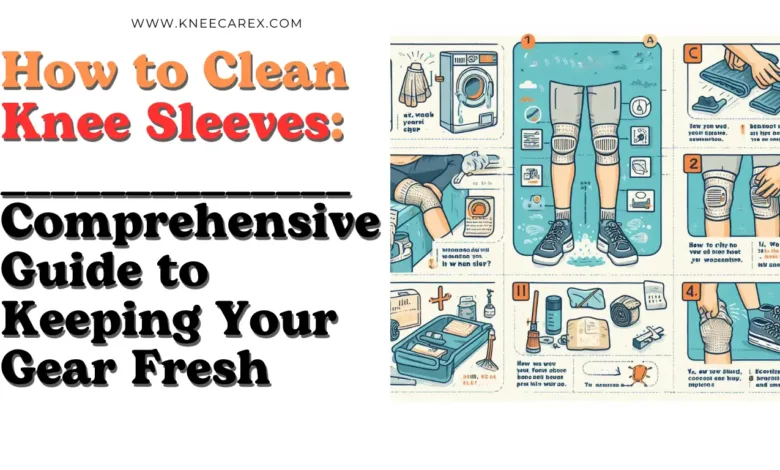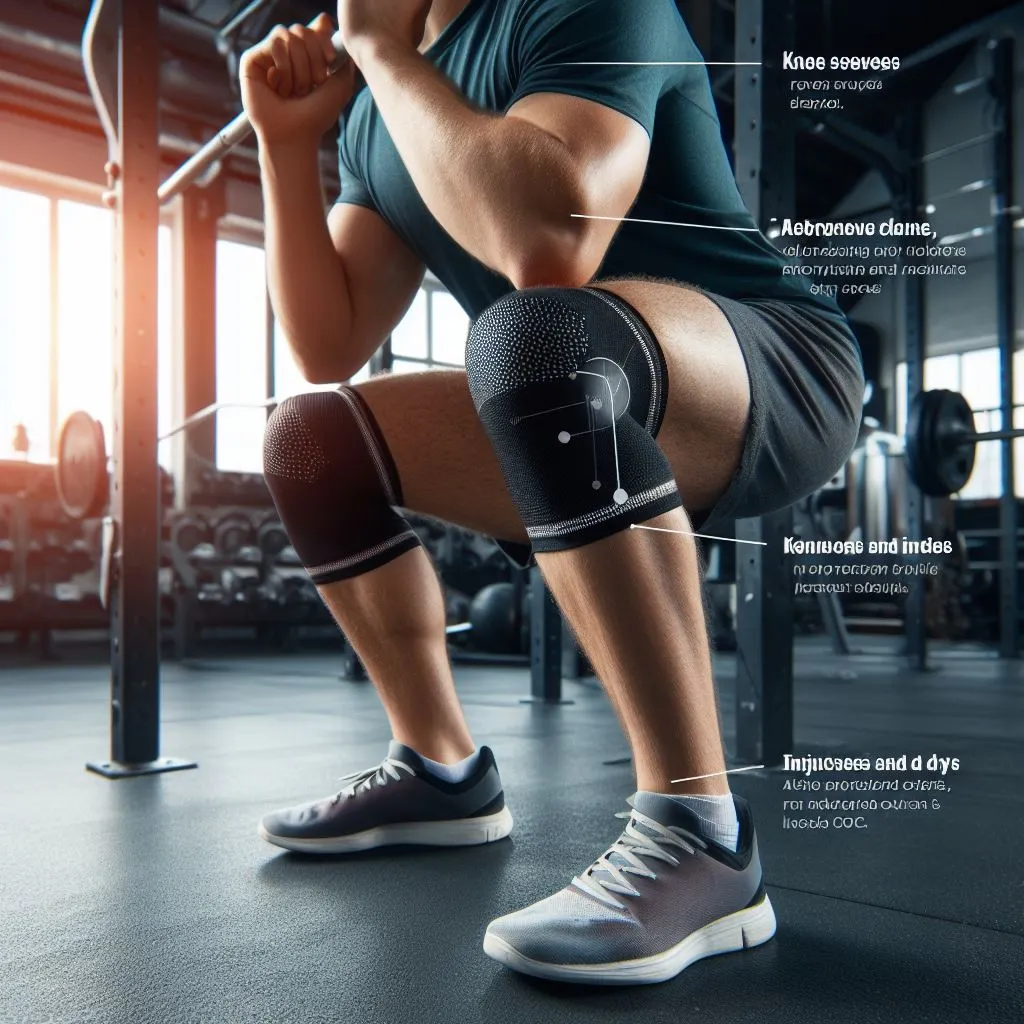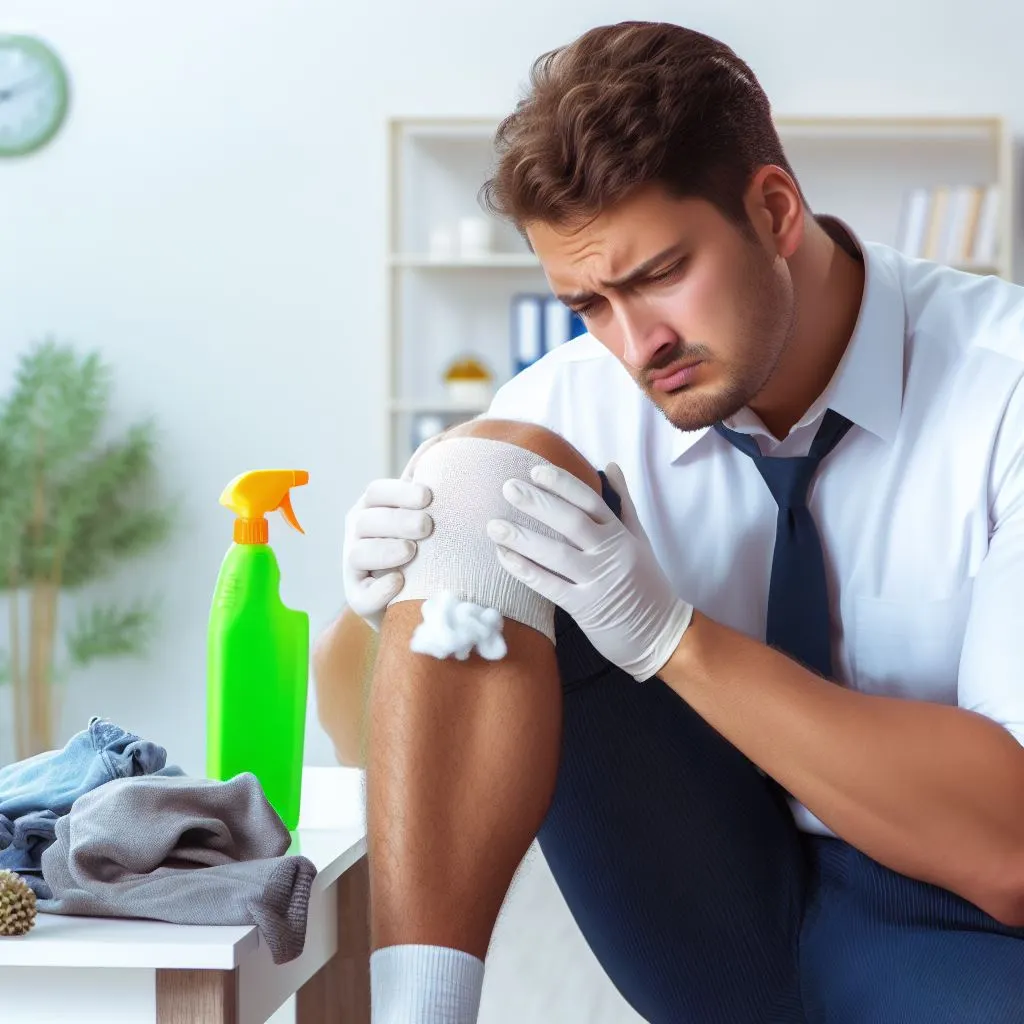How to Clean Knee Sleeves: A Comprehensive Guide to Keeping Your Gear Fresh

Here is our comprehensive guide on how to clean knee sleeves! Suppose you engage in any physical activity that requires knee support, such as weightlifting, CrossFit, jogging, or any other sport. In that case, you are likely familiar with the challenge of smelling knee sleeves. But don’t worry! In this comprehensive guide, we’ll explore the best ways to wash knee sleeves to ensure they stay fresh, clean, and supportive during your exercises.
Contents
Why Clean Knee Sleeves Are Essential

The Basics of Cleaning Knee Sleeves:
To keep them in good condition and prolong their lifespan, knee sleeves should be cleaned regularly. As the manufacturer directs, wash your hands in lukewarm water with a light detergent. Soak it in vinegar and water, let it air dry, and store it in a well-ventilated area to remove strong odors. Steer clear of harsh chemicals and bleach. Athletes can preserve their knee sleeves for practice and competition by cleaning them regularly.
Regular Maintenance:
Shaking off extra dirt and debris from your knee sleeves after every workout is essential to keep them clean and avoid odor-causing substances. By practicing mindfulness, one can develop a greater regard for the apparatus that improves physical performance. You can also avoid moisture build up, which can lead to the growth of bacteria and odor, by ensuring your knee sleeves have enough time to air out after usage. After usage, letting your sleeves hang in a well-ventilated place helps them dry entirely and last longer. You can extend the life of your knee sleeves and keep them looking fresh by allowing them to breathe a little bit.
Hand Washing:
Use a moderate detergent and lukewarm water to preserve knee sleeves’ performance and longevity. To preserve the integrity of the material, avoid harsh chemicals that might degrade elastic and fabric fibers Apply a gentle cleaning cloth or brush to scrub areas prone to odor, and think about using a light soap or detergent made especially for sporting clothing. After every use, carefully rinse to remove any remaining sweat, grime, or bacteria. Then, let the item air-dry in a well-ventilated space out of the sun. This will guarantee the sleeves’ suppleness and structural integrity for numerous workouts and avoid premature wear and tear.
Machine Washing:
Place knee sleeves in a mesh laundry bag before washing to keep them clean and undamaged. For best results, use cold water on a moderate cycle to maintain their suppleness and quality. Bleach and fabric softeners should not be used, as they diminish the material’s lifespan and cause damage. Let the knee sleeves air dry after cleaning, wringing out extra water, and using a disinfectant spray or solution. For this reason, avoid using the dryer since the intense heat may harm the sleeves’ flexibility and materials.
Drying Techniques:
Dryers with high heat can damage knee sleeves’ fabric, particularly those of compression or neoprene. Brittleness, elasticity loss, cracks, or tears as a result of this may compromise their durability. Knee sleeves can be made to last longer by air-drying them at room temperature, which maintains the integrity of the fabric. Additionally, it keeps the stitching and reinforced seams in place, providing the best possible support while exercising. By preserving the flexibility and structure of the sleeves, air drying also lowers the possibility of damage from repeated machine drying. By allowing moisture to drain naturally, hanging knee sleeves in a well-ventilated location helps stop mildew and mold growth.
Dealing with Stubborn Odors:

Vinegar Soak:
You may clean knee sleeves by soaking them in vinegar and water. While the water dilutes the vinegar to provide a mild but thorough clean, the vinegar’s acidic qualities break down sweat and odor-causing bacteria. This environmentally friendly technique improves the quality of your workout and extends the life of your knee sleeves. Soak the sleeves for an hour after working out to eliminate lingering smells and loosen entrenched dirt. This will make it simpler to clean and recondition the sleeves. Rinse and dry.
Baking soda paste:
Make a paste out of baking soda and water to clean knee sleeves. Odors and stains are effectively removed from cloth by baking soda’s mild abrasive qualities and natural deodorizing capabilities. Use the paste to revitalize the cloth in challenging areas without causing any damage. Let the solution sit briefly to break down bacteria that cause odors, sweat, and dirt. Rinse and pat dry to preserve the knee sleeves’ freshness and elasticity. This process protects your equipment from harmful chemicals and fake fragrances while maintaining its integrity.
Unique Tips and Tricks Not Found Elsewhere:
Use white vinegar as a natural deodorizer, and freeze knee sleeves after washing to keep them clean and fresh. Acidity serves as a moderate disinfectant and odor neutralizer. Freezing eliminates germs and microorganisms that cause odor, keeping the sleeves fresher. These original ideas offer several approaches to keeping your equipment pristine and new between sessions.
Freezing Method:
Knee sleeves can be frozen overnight and sealed in a plastic bag to keep them fresh and odor-free. By eliminating bacteria that love warm, moist conditions, this technique keeps germs from growing and lengthens their lives. Freezing reduces the environmental impact of cleaning solutions that contain chemicals. It is also more affordable and environmentally friendly. To achieve a whole new look, use this creative technique.
Sunlight Exposure:
Due to its inherent antibacterial qualities, sunlight is a valuable remedy for odors in exercise equipment. UV rays keep your equipment fresh and extend its life by eliminating bacteria and fungi. Combating lingering odors in athletic apparel may be revolutionized by using sunlight as a cleaning agent.
Hydrogen Peroxide Spray:
The mild cleaning solution, hydrogen peroxide spray, removes lingering smells from knee sleeves. Diluting hydrogen peroxide with water eliminates bacterial growth and persistent odors, leaving the sleeves clean and fresh. Maximum effectiveness is ensured by carefully diluting and settling the solution before wiping or rinsing.
FAQ’s
Should you wash your knee sleeves?
For knee sleeves to be effective and long-lasting, regular maintenance is essential. Germs and perspiration accumulation can cause odours and skin irritations. Regular washing removes these worries and guarantees sufficient assistance. The integrity of the fabric and its antimicrobial qualities can be preserved by following the manufacturer’s instructions, hand washing with a mild detergent, air drying after washing, and so on. A worry-free experience during exercises or competitions is provided by proper maintenance, which guarantees longevity and freshness.
How do you get rid of smelly knee sleeves?
Unpleasant smells from knee sleeves are a common problem for athletes. Use a proactive cleaning technique to prevent this, including soaking them in warm water with a small amount of detergent, thoroughly cleaning them, and letting them air dry. Frequent washing helps stop the growth of microorganisms that cause odours. Odours can also be eliminated with natural deodorizers like baking soda or white vinegar. These tactics guarantee that knee sleeves are clean and prepared for action.
Can you wash your knee sleeves with dish soap?

How do you get the smell out of knee pads?
Athletes frequently experience issues with residual odours from knee pads. Using baking soda or activated charcoal to absorb moisture, cleaning and airing out knee pads after each use, and using antimicrobial essential oils are some ways to combat this. Additionally, sunlight can help deodorize knee pads and eradicate microorganisms. Invest in odour-fighting sprays to keep your sporting goods smelling good.
Conclusion: How To Clean Knee Sleeves
In conclusion, maintaining clean knee sleeves is essential for longevity and hygiene. You’ll be armed with creative ways to eliminate smells and preserve the quality of your knee sleeves with our all-inclusive guide, so your exercises stay supported and comfortable.




